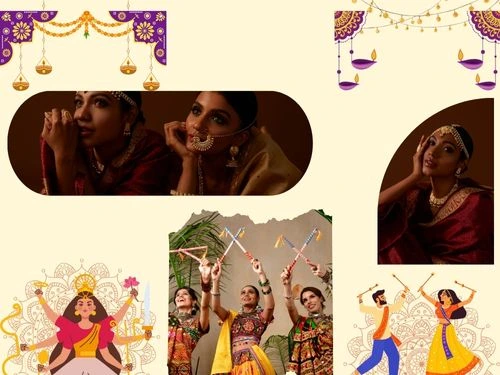In a world that feels increasingly interconnected, the call to travel is louder than ever. We seek out new sights, sounds, and tastes, driven by an insatiable curiosity about the global tapestry. Yet, to truly experience a destination, we must become more than just visitors; we must become respectful guests. Cultural etiquette is not a set of archaic rules, but rather a universal language of kindness, appreciation, and respect for the diverse ways humanity organizes its life.
Navigating the nuances of local customs can transform a good trip into a significant, enriching experience. Ignoring them, however, can lead to awkward moments, missed connections, or, in some unfortunate cases, genuine offense. A small effort to understand the local “dos and don’ts” acts as a passport to authentic interaction, unlocking smiles and open doors that remain shut to the purely transactional tourist.
This comprehensive guide delves into the essential cultural etiquette tips for some of the world’s most popular destinations. By preparing yourself with this knowledge, you are taking the first, most crucial step toward becoming a better, more conscious traveler.
The Golden Rule: Universal Principles of Respect
Before diving into country-specific advice, a few core principles apply everywhere you go. These are the foundations of global respectful travel:
- Learn a Little of the Local Language: Simple phrases like “Hello” (Konnichiwa, Bonjour, Sawasdee krap/ka), “Thank you” (Arigatou, Merci, Khob khun krap/ka), and “Please” (S’il vous plaît) show incredible respect. It signals that you value the local culture enough to try, even if your accent is imperfect. Locals will appreciate the effort; they often switch to English if they see you struggling, but the attempt must come first.
- Dress Modestly at Sacred Sites: This is a near-universal requirement. When visiting temples, mosques, churches, or any place of worship, always cover your shoulders and knees. In some conservative regions, this expectation extends to public areas, not just religious buildings. Always carry a light shawl or scarf to be prepared.
- Ask Before You Photograph People: A camera can feel intrusive. Before taking a picture of an individual, especially in rural areas or of people in traditional dress, always ask for permission first. A simple gesture or a polite question can prevent a tense situation. Remember, people are not props for your travelogue. Be discreet and respect a refusal immediately.
- Be Mindful of Noise Levels: The volume of your voice and behavior in public spaces often varies culturally. In many East Asian and European countries, loud talking, especially on a mobile phone in public transport or restaurants, is considered poor manners. Always try to match the surrounding ambient volume.
Master Essential Cultural Etiquette Tips for Amazing Travel
Japan
Japan is a country where harmony and respect for others are deeply ingrained in daily life. Their etiquette, or reigi, is complex, yet rooted in a profound consideration for the community. Tourists are rarely expected to be perfect, but attempting to follow these norms is highly valued.
Greeting and Social Interaction
- The Bow: The primary form of greeting is the bow (ojigi). As a tourist, a slight, respectful nod of the head is usually sufficient when greeting service staff or thanking someone. Avoid imitating the deep, formal bows locals exchange, as the depth and duration have specific meanings you might not understand. A handshake, while increasingly common, should be reserved for business or particular situations in which a Japanese person initiates it.
- Gift-Giving: If you are invited to a Japanese home, bringing a small gift (omiyage), often a regional specialty from your hometown, is a thoughtful gesture. Present and receive gifts with both hands as a sign of respect. It is customary to politely refuse a gift a couple of times before accepting it, and to open it later in private, not in front of the giver.
- Personal Space and Silence: Japan is a culture that highly values quiet public spaces. Avoid talking on your mobile phone while on trains and keep conversations with your travel companions subdued. Loudness is seen as disruptive. Additionally, do not eat or drink while walking on the street, except for a few specific street food markets.
Dining Etiquette
- Chopsticks are Sacred Tools: Never stick your chopsticks upright into a bowl of rice; this is a custom reserved for funeral rites and is deeply offensive. When not in use, rest your chopsticks neatly across your bowl or on the provided chopstick rest (hashioki). Never pass food directly from your chopsticks to someone else’s, as this, too, is a funerary ritual.
- Slurping and Soup: Ironically, while quiet is valued, loudly slurping noodles is perfectly acceptable, even encouraged, as it signifies enjoyment and appreciation of the food. However, do not blow your nose at the table or in public. Excuse yourself to a restroom if needed.
- Tipping: Tipping is not customary in Japan. In fact, it can be seen as an insult, suggesting that you feel the service worker is underpaid. If you leave money, a server will often chase you down to return it.
Shoe and Home Customs
- Shoes Off: Always remove your shoes when entering a Japanese home, a traditional ryokan (inn), most temples, and sometimes even specific sections of restaurants. Look for a designated area (genkan) and ensure you are wearing clean, hole-free socks, as you will be visible to everyone. If slippers are provided, wear them, but remove them before stepping onto tatami (woven mat) flooring.
🇮🇹 Italy
Italy, a nation steeped in history, art, and legendary cuisine, embraces a passionate, yet formal, approach to life. To blend in, you need to respect their traditions and the rhythm of their daily existence.
Greeting and Social Interaction
- Formal Greetings: When entering any shop, café, or restaurant, a simple “Buongiorno” (Good day) or “Buonasera” (Good evening, usually after lunch) is mandatory. Failing to acknowledge the staff is considered abrupt and rude. Upon leaving, a “Grazie” (Thank you) or “Arrivederci” (Goodbye) is expected.
- Addressing People: Older individuals and those in formal roles, such as professors or government workers, are still addressed by their titles (e.g., Signora or Signore). While a tourist may be forgiven for skipping this, a general tone of respect for elders is key.
- The Pace of Life: Italians value leisure, especially around meals. Do not rush your dining experience or try to hurry the waiter. Asking for the bill immediately after the last bite can suggest you are not enjoying the moment. Meals are meant to be savored, sometimes for hours, as a social event.
Dining and Food Etiquette
- The Cappuccino Rule: Perhaps the most famous Italian faux pas. Cappuccinos are strictly a breakfast drink. Ordering one after 11 AM or, heaven forbid, after a large meal, is a culinary violation. Italians believe the milk hinders digestion. After your meal, opt for a small espresso or caffè.
- Food as Art: Avoid customizing dishes in non-tourist establishments. Italian chefs take immense pride in their recipes; asking for substitutions or additions is seen as questioning the integrity of the dish.
- Sitting to Eat: In many cities, like Rome and Florence, eating or drinking near historical monuments, fountains, and churches is prohibited and can incur a fine. Save your pizza slice or gelato for a proper café or a less historic bench. Food is meant to be enjoyed sitting down and at leisure.
- Hands on the Table: Unlike in some other cultures, it is polite to keep both hands visible at all times when dining. Rest your wrists on the edge of the table, but avoid placing your elbows there.

🇹🇭 Thailand
Thailand’s famed hospitality is genuine, but it is rooted in a deep tradition and a high regard for sacred things. Known as the “Land of Smiles,” it is a place where respect, patience, and a commitment to avoiding confrontation are paramount.
The Body and Its Significance
- The Head is Sacred: In Thai culture, the head is considered the most sacred part of the body, as it is the highest point. Never touch a Thai person’s head, not even a child’s, no matter how cute the gesture is intended to be.
- The Feet are Unclean: The feet are the lowest and dirtiest parts of the body. Never use your feet to point at a person, a sacred object, or anything else. Similarly, when sitting, ensure the soles of your feet are not pointing towards anyone, especially a Buddha image or a monk. Cross your legs with your feet tucked neatly to the side.
Greetings and Social Interaction
- The Wai: The traditional Thai greeting is the Wai, a prayer-like gesture with the hands pressed together, accompanied by a slight bow. Tourists are generally not expected to initiate the Wai with service staff, but you should return a Wai given to you by a peer or someone of your age. The higher the hands are held, the more respect is shown. Do not wait for a child.
- Respect for the Monarchy and Buddha: Thai people hold their King and the royal family in extremely high regard. Any harmful or disrespectful comments about the monarchy are taken very seriously and may even be illegal. Likewise, the image of the Buddha is sacred. Never climb on, mock, or treat an image of Buddha disrespectfully. Tattoos of Buddha should be covered.
Dress Code and Temples
- Modesty at Temples (Wats): When visiting a Wat, you must dress respectfully. This means covering your shoulders and knees, even on a hot day. Many popular temples will provide wraps or rental clothing for a fee, but it is always best to be prepared.
- Shoes Off: As in many places in Asia, you must remove your shoes before entering any Thai home, temple, small shop, or restaurant.
🇫🇷 France
France, particularly Paris, is known for its appreciation of style, subtle formality, and high standards in dining. Many of the “rude French” stereotypes can be debunked by simply following a few basic rules of social conduct that prioritize politeness.
Greeting and Social Interaction
- Bonjour is Non-Negotiable: This is the most crucial tip. Upon entering any establishment—a bakery, a clothing store, a restaurant, even a public office—you must offer a polite “Bonjour, Madame” or “Bonjour, Monsieur” to the person you are interacting with. Failure to do so is considered the height of rudeness. It should be the very first word out of your mouth.
- Formality with Strangers: The French language uses two forms of “you”: tu (informal) and vous (formal). Always use vous with strangers, elders, and anyone in a professional capacity, like a server or a shopkeeper. Wait until you are invited to use tu. As a non-native speaker, sticking with vous is the safest and most respectful option.
- Volume Control: As in Japan, loud conversation in public is considered impolite, especially on public transport or in restaurants. Try to speak at a quieter, more measured tone.
Dining and Food Etiquette
- Don’t Rush the Meal: Meals are a ritual. Do not expect rapid service; the French take their time. A two-hour dinner is not uncommon. Servers will rarely bring the bill without you asking; it is considered bad form to rush a guest.
- The Bread Plate: Your bread is meant to be placed directly on the tablecloth next to your plate, not on the plate itself or on a side plate, which is rare. You tear off pieces as you eat, rather than slicing them.
- Avoid Customization: Similar to Italy, asking to modify a dish in a traditional French restaurant is a grave insult to the chef’s craft. Order it as it is listed.
- Tipping: Service is always included in the price (service included). Tipping is not mandatory, but leaving a small amount—a few euros or rounding up the bill—is a kind gesture for excellent service. It is a sign of appreciation, not a living wage supplement.
The Middle East (General)
Traveling across the Middle East—a diverse region that includes countries such as the UAE, Morocco, Jordan, and others—requires a commitment to modesty and respect for Islamic customs and values, which deeply permeate society.
Dress and Public Conduct
- Modesty is Key: This applies to both men and women, though expectations are higher for women. Women should cover their shoulders, chest, and knees in public. Loose-fitting clothing is always better than tight. Men should also wear long trousers and avoid tank tops outside of resort pools.
- Public Displays of Affection (PDA): Keep physical affection between partners private. Even holding hands or a quick peck on the cheek can be considered inappropriate and disrespectful in many public spaces.
- Alcohol and Behavior: Alcohol laws are strict or nonexistent in many parts of the region. Where alcohol is permitted, avoid public drunkenness at all costs. Never attempt to transport alcohol outside of designated areas.
Social Etiquette
- Hospitality and Refusal: Hospitality is a cornerstone of Arab culture. If offered food, coffee, or tea, it is polite to accept. Refusing an initial offer may be appropriate, as a host will often insist, but persistent refusal can be considered rude.
- The Right Hand Rule: In parts of Asia and India, the left hand is culturally associated with bodily hygiene and considered unclean. Always use your right hand for eating, shaking hands, and passing objects, especially food and money. If you are left-handed, be extra mindful of this custom.
- Shaking Hands: Shaking hands with people of the same gender is common. However, men should typically wait for a woman to extend her hand first. If she does not, a slight bow or a hand-over-heart gesture is a respectful alternative.
The Journey to Conscious Travel
The world can be viewed as an expansive text, and travel provides the opportunity to explore its chapters. True understanding of the narratives contained within requires reading them with humility and respect. Cultural etiquette is not an obligation; rather, it serves as a comprehensive field guide that facilitates deeper connections with local communities.
Each country maintains a unique social contract, an unstated architecture of behavior that ensures societal harmony. Efforts to understand these contracts, such as knowing how to use vous in France, avoiding a post-11 AM cappuccino in Italy, or removing footwear in a Japanese home, signal that a visit transcends mere sightseeing. It demonstrates genuine appreciation for the local culture.
A thoughtful approach involves accepting inevitable small errors with grace, offering a sincere smile, and maintaining readiness to learn from every interaction. This mindset prevents a visitor from being perceived as “the tourist” and elevates the quality of the journey. Such consideration enriches the travel experience significantly, ensuring a return home with narratives of meaningful connection, rather than a collection of simple landmarks. Respectful travel constitutes the highest form of travel.













